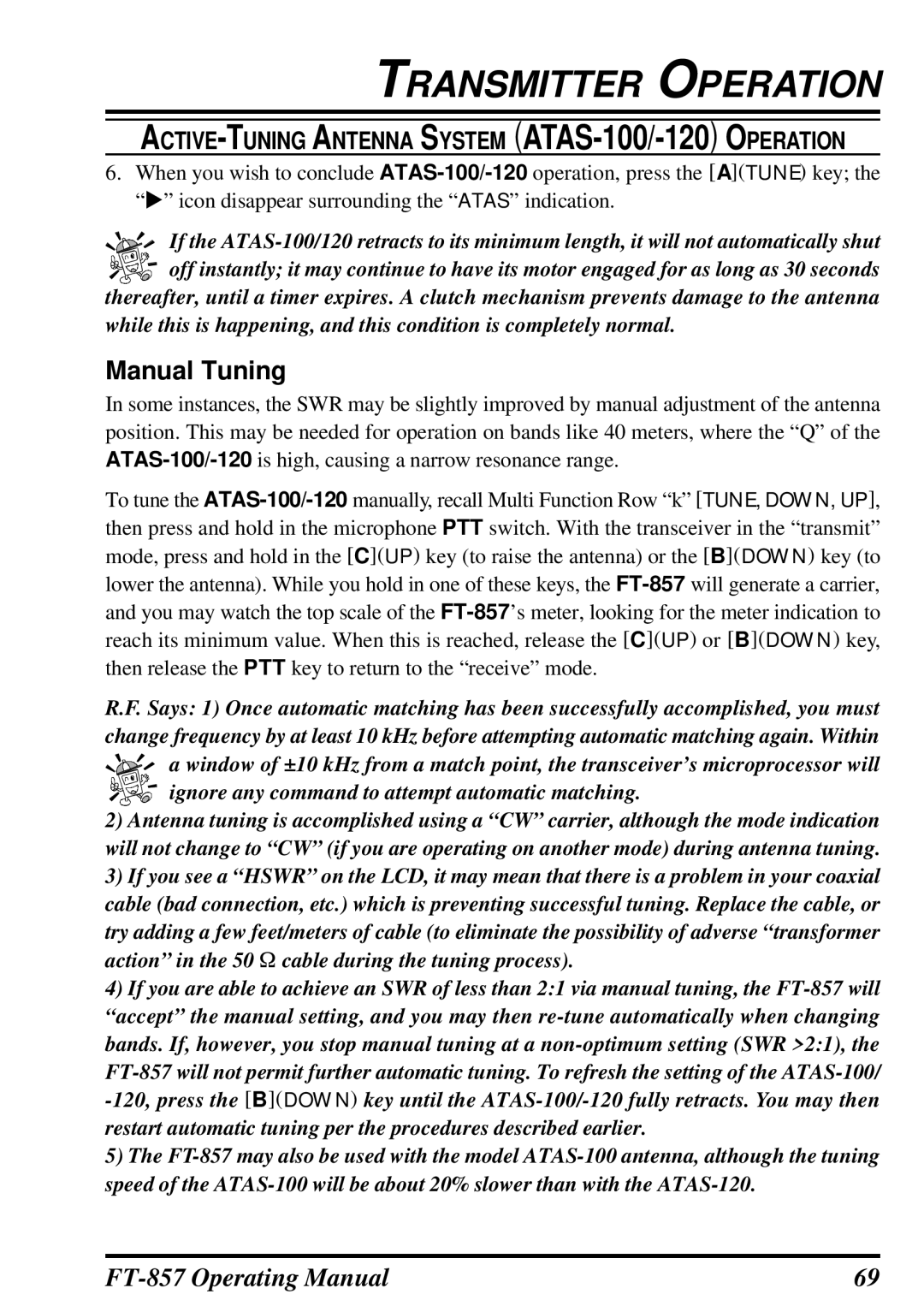FT-857 specifications
The Vertex Standard FT-857 is a compact and versatile all-mode transceiver that has become popular among amateur radio operators since its introduction. With its ability to operate in VHF, UHF, and HF bands, the FT-857 caters to a diverse range of communication preferences and provides exceptional performance for both mobile and base station applications.One of the key features of the FT-857 is its coverage of a broad frequency range, spanning from 160 meters to 2 meters and covering the 70 cm band. This wide frequency coverage allows amateur operators to communicate with fellow enthusiasts across various bands, ensuring versatility in operational environments. The FT-857 offers an output power of up to 100 watts on HF and 50 watts on VHF/UHF, providing sufficient power for effective communication, whether in local or distant contacts.
Another distinctive characteristic of the FT-857 is its all-mode capability. It supports various modes of operation, including SSB, CW, AM, and FM, making it suitable for different operating styles and preferences. The inclusion of advanced digital signal processing (DSP) technology enhances audio clarity and offers noise reduction features, which are crucial in crowded bands. This DSP capability also aids in improving signal quality and overall communication experience.
Portability is a significant advantage of the FT-857. Its compact size and lightweight design make it an excellent choice for field operations and portable setups. Additionally, the transceiver is well-equipped with features such as built-in memory channels, allowing users to save and quickly access frequently used frequencies. The FT-857 also includes a built-in automatic antenna tuner, which makes it easier for operators to set up and optimize their antenna configurations without requiring additional external devices.
The FT-857 is designed with user-friendly controls and a clear LCD display, enabling operators to quickly adjust settings and monitor communication details without confusion. The visibility of the display is especially vital for use in different lighting conditions, ensuring that users can operate efficiently whether in bright sunlight or low light conditions.
In summary, the Vertex Standard FT-857 is a highly capable, compact transceiver that offers an effective solution for amateur radio communication. With its all-band, all-mode capabilities, robust DSP technology, and user-friendly design, the FT-857 remains a popular choice for both enthusiasts and professionals alike, facilitating engaging communication experiences across multiple bands and modes.

